New products at Crocus
by Sarah - December 4th, 2009.Filed under: Crocus, New Products.
New products at Crocus

basket-tree-complete-with-4-hanging-baskets £29.99
Adds Height and colour to a patio.Sturdy and stableEasy to assemble – full instructions included.Complete with four 30cm (12″) metal hanging baskets.All baskets includes a Coco liner.Height: 1.86m (6ft)
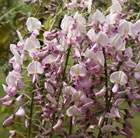
Japanese wisteria £14.99
Rare Japanese wisteria producing pendulous clusters up to 45cm (18in) long of pale rose-pink flowers in June. Less vigorous than other varieties it’s ideal for training against a sunny house wall. To enhance flowering provide ample space for the roots to spread and carefully prune the twining stems twice a year.Position: full sun or partial shadeSoil: fertile, moist, well-drained soilRate of growth: fast-growingFlowering period: JuneFlower colour: pale rose-pinkOther features: light grey-green leaflets, turning yellow in autumn; velvety, green seed-pods in hot summers; all parts of the plant are harmful if ingestedHardiness: fully hardyGarden care: In the first growing season tie in lateral shoots and cut back sub-lateral shoots to two or three buds. During the first winter cut back laterals by one third and sub-laterals by two or three buds
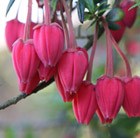
lantern tree £12.99
A beautiful, ornamental, evergreen shrub or small tree named after the lantern-shaped, crimson to deep carmine-pink flowers, suspended from the undersides of its branches from May to August. This award-winning lantern tree is perfect for a partially shady woodland garden with humus-rich acid soil. Initially slow-growing, in cold areas it’s best grown in a cool greenhouse or conservatory to minimise the risk of frost damage to the young flower buds.Position: full sun or partial shadeSoil: fertile, moist but well-drained soil, humus-rich acid soilRate of growth: initially slow-growing Flowering period: May to August Flower colour: crimson to deep carmine-pinkOther features: toothed, dark green leavesHardiness: frost hardyGarden care: After flowering lightly cut back any shoots that spoil the symmetry of the plantGoes well with: Kirengeshoma palmata, Acer palmatum ‘Osakazuki’, Enkianthus campanulatus, Polygonatum odoratum, Dryopteris filix-mas, Eranthis hyemalis
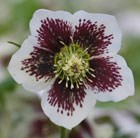
hellebore £9.99
Position: partial shadeSoil: heavy, neutral to alkaline soilRate of growth: average Flowering period: February to April Flower colour: white with red specklesOther features: all parts of the plant cause severe discomfort if ingested; the sap may cause skin irritationHardiness: fully hardyPretty, pendent or outward-facing, saucer-shaped, white with red speckles flowers from February to April and leathery, deep green leaves. This is an attractive variety which is perfect as a ground cover for areas of dappled shade under deciduous trees and shrubs. Like all hellebores they prefer a heavy, neutral to alkaline soil.A top tip from the Crocus crew is to cut back the old leaves down to the ground in January or February. This will show off the new emerging flowers to best effect and it also helps to get rid of foliar diseases such as Hellebore leaf spot.Garden care: Add lots of well-rotted leaf mould or organic matter to the planting hole. Apply a generous 5-7cm (2-3in) mulch of well-rotted organic matter around the base of the plant in autumn and provide a top-dressing of general fertiliser each spring.
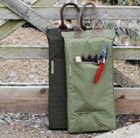
olive-kneeler-pad £9.99
Make weeding and planting more comfortable using this versatile kneeler. Made from tough 100% polyester that makes cold, wet and muddy knees a thing of the past. Each kneeler has a leather carrying handle and a front pocket for storing string, garden gloves or a planting trowel.Measurements 25 wide x 56cm long x 5cm thick
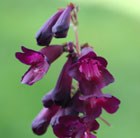
beard tongue £6.99
Position: full sun or partial shadeSoil: fertile, well-drained soilRate of growth: average Flowering period: June to OctoberHardiness: fully hardy (borderline)Elegant spikes of small, tubular, foxglove-like flowers appear from July to October among lance-shaped, bright green leaves. This easy-to-grow perennial will quickly form large, leafy clumps and is perfect for adding a splash of colour to the middle of a sunny, well-drained border. If you deadhead regularly, the flowers will persist until the first frosts. The rich, deep purple flowers of this variety contrast particularly well with purples and acid greens.Garden care: Remove the faded blooms regularly to prolong flowering. Apply a dry mulch around the base of the plant to protect the roots from frost damage and cut back in spring when new shoots appear low down on the stem. Lift and divide congested clumps in spring.
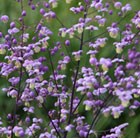
meadow rue £5.99
Position: partial shadeSoil: moist, humus rich soilRate of Growth: slow to averageFlowering period: July to SeptemberFlowers: lilacOther features: leaves & flowers are good in flower arrangementsHardiness: fully hardyFluffy sprays of lilac flowers on upright, dark-purple stems above clumps of fern-like, grey-green leaves. This light and airy perennial is perfect towards the back of a herbaceous or mixed border. Best grown in moist, humus-rich soil, both the dainty foliage and flowers contrast well with the coarser-leaved plants usually grown at the back of the border.Garden care: Stake using ring stakes or brush-wood before the flowers appear. Cut back the stems to the ground after flowering. Add a generous 5-7cm (2-3in) mulch of well-rotted manure or garden compost around the base of the plant in spring. Lift and divide congested plants in spring.
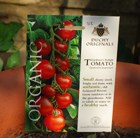
cherry tomato – organic £2.49
Position: full sunSoil: fertile and well drained with added organic matterRate of growth: fastHardiness: tenderSmall cherry sized, bright red fruits with authentic, old fashioned flavour. Can be grown outdoors after frosts, or in the greenhouse. Absolutely delicious, just pick, rinse with water and enjoy.Growing Instructions:Sow from March to May in pots or trays on the surface of barely moist seed compost, and cover with a sprinkling of finely sieved compost. Place in a propagator at 18-20C until germination, which usually takes up to 10 days. Transplant the seedlings into small pots or cells and grow on until they are about 10cm high, then after all risk of frost has passed, they can be planted outdoors, 60cm apart. Alternatively pot them into growbag or container and keep in the greenhouse. Support the plant with a stout canes as it grows and remove shoots between the leaf axils (sideshoots) regularly. The fruits will be ready from July to October and picking the crop regularly wil help to extend the season.






